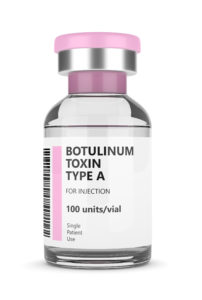Botox treatment for Overactive bladder
Overactive bladder, also referred to as OAB, is a common condition that affects over 30 million Americans. Urination is controlled by the bladder’s detrusor muscle. When this muscle is relaxed, the bladder stores urine. When it contracts, the bladder voids urine. Overactive bladder is characterized by sudden, involuntary contractions of the detrusor muscle, urinary urgency, frequency, leakage and wetting accidents. Fortunately, there are several effective treatment options for OAB including the injection of Botox directly into the bladder muscle.
Most people associate the use of Botox as a therapy to smooth facial wrinkles. However, Botox, or Botulinum toxin, is a protein that is currently used in several medical applications including the treatment of migraine headaches, muscle spasticity, overactive bladder and neuropathic pain. In simple terms, it works by temporarily blocking signals between the nerves and muscles. This results in paralyzing muscles for a short period of time so they are unable to contract.
Before proceeding with Botox injections, the physician will discuss its potential benefits, how the procedure is performed, what the patient should expect after the treatment, and the medical recommendations for repeated treatments. This discussion will help the patient make an educated decision before moving forward.
What to expect during Botox treatment
When treating overactive bladder, Botox is injected directly into the bladder muscle in several locations. This relatively short in-office procedure is performed without the use of general anesthesia. To help keep the patient comfortable during the procedure, lidocaine (a local anesthetic) will be used to numb the patient’s bladder. Once numbed, a thin lighted tube, called a cystoscope, will be inserted through the urethra to the bladder. At this point, a needle will inject Botox at several points over a wide area of the bladder wall.
Following the injections, the patient may feel a stinging or burning sensation when they urinate, but they should not feel significant pain. They may also notice a small amount of blood in their urine for a short period of time. The beneficial effect of Botox for OAB is temporary and usually lasts between six to twelve months.
If you are experiencing urgent or frequent urination, contact Urology Austin to schedule an appointment with one of our providers.
Dr. Rachel Sosland, Board Certified Urologist at Urology Austin, is interviewed by KXAN TV about common urological conditions that effect millions of Americans. Dr. Sosland discusses the symptoms and treatment options for urinary incontinence (stress incontinence), overactive bladder and urinary retention. She also talks about third-line therapies such as botox injections, InterStim Sacral Nerve Stimulation, and Percutaneous Tibial Nerve Stimulation (PTNS).
Learn more by watching this Patient Animation Video courtesy of Allergan.

